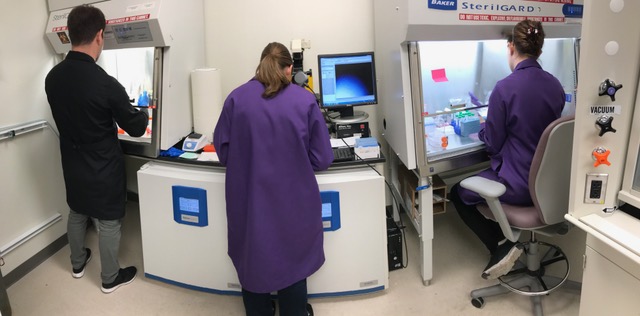The University of Wisconsin Cyclotron Research Group joins the University Isotope Network and Establishes New Domestic Isotope Supply Chains

University of Wisconsin Cyclotron Research Group
The DOE Isotope Program is excited to announce the addition of the University of Wisconsin Cyclotron Research Group to the University Isotope Network. Supported by DOE IP funding, the UW Cyclotron Research Group have developed four new production lines of isotopes at their facility, now available through the NIDC product catalog. Manganese-52g, Bromine-76, Bromine-77, and Yttrium-86 are all in routine production and are available now. The University of Wisconsin Cyclotron Research group is the fourth university to join the University Isotope Network.
UW Cyclotron isotopes available now through NIDC
Yttrium-86, Bromine-76, Bromine-77, and Manganese-52g are all in routine production and are available now.
Bromine-76 and Bromine-77:
This is a new domestic supply chain. This versatile radionhalogen theranostic pair has been used to form covalent bonds with organic structures for imaging and therapy since the 1980s, when low specific activity Br-77 was available from Los Alamos National Laboratory. Thanks to development in small cyclotron intermetallic targetry, and funding from the DOE Isotope Program, the University of Wisconsin makes both the PET imaging isotope (Br-76) and the Meitner-Auger electron-emitting or therapeutic (Br-77) available following a dry distillation purification process.
Yttrium-86:
Yttrium-86 is a positron-emitting theranostic homolog of Y-90 that is of increasing interest in a wide variety of PET-imaging scenarios. Its 14.7-hour half-life makes it useful for following many physiological processes, and radiolabeling reactions with standard chelating ligands (e.g., DOTA) are straight forward. This isotope is also produced at Brookhaven National Laboratory in the DOE IP.
Request a quote for Yttrium-86
Manganese-52g:
Manganese-52g is an isotope of interest as a long-lived positron emitter for investigating the biodistribution of intact antibodies or nanoparticles, and as a potential PET analog for the development of dual labeled PET/MRI agents. This isotope is also produced at the University of Alabama Birmingham, another member of the University Isotope Network.
Request a quote for Manganese-52g
The University of Wisconsin Cyclotron Research Group
Located in Madison, Wisconsin, the UW Cyclotron Groups’ two machines, a CTI RDS 112 prototype and a General Electric PET trace, irradiate solid, liquid, and gas phase targets with up to 16 MeV protons or up to 8 MeV deuterons. The UW Cyclotron Groups’ capability to routinely produce radioisotopes stems from the multiple target ports on each machine, 4 on the RDS and 6 on the PET trace which also has an additional beam line with a 5-port switching magnet.
The Group has available hot cells and fume hoods for radionuclide-based science, radiochemistry, and fundamental scientific inquiry. Additionally, a suite of small animal and clinical imaging facilities, and GMP pharmaceutical preparations can be prepared in adjacent laboratories. For more information on the Group, please follow the link: https://cyclotron.wisc.edu.


